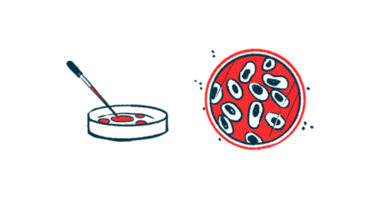Gaucher disease gene therapy FLT201 shows proof of concept
Treatment leads to sustained enzyme increases in animals, study finds

FLT201, a gene therapy for Gaucher disease type 1 currently in clinical testing, led to sustained increases in glucocerebrosidase (GCase) enzyme activity and reductions in fat molecules in animal models, indicating that it works as designed.
The gene therapy provides instructions for the production of an optimized version of GCase that’s much more stable than the normal enzyme, allowing it to reach target tissues more effectively. Enzyme activity was observed even in tissues that are harder to reach by conventional therapies, such as the lungs and bone marrow.
Results from the proof-of-concept preclinical experiments were detailed in the study, “FLT201, a novel liver-directed AAV gene therapy candidate for Gaucher disease type 1,” which was published in Molecular Therapy. The work was funded by Spur Therapeutics, the company developing FLT201.
“FLT201 was designed to address the shortcomings of existing therapies for Gaucher disease,” Pamela Foulds, MD, Spur’s chief medical officer, said in a company press release.
Gaucher disease is caused by mutations in the gene that provides instructions to make the GCase enzyme. This enzyme is normally needed to break down a fatty molecule called glucocerebroside (Gb1), but in Gaucher disease GCase is dysfunctional or absent, leading to a toxic buildup of Gb1 that ultimately drives Gaucher disease symptoms. Gaucher disease type 1, the most common form of the disorder, is marked by an absence of neurological symptoms that are seen in rarer Gaucher types.
Improving treatment for Gaucher disease
Current treatments for Gaucher disease include enzyme replacement therapy (ERT), which works by delivering a healthy version of the GCase enzyme to the body, and substrate reduction therapy, which aims to reduce the Gb1 production. Although these approaches can help slow disease progression, they aren’t perfect, and patients need to take them continually for their entire lives.
“Many people with Gaucher disease continue to experience symptoms, including pain, fatigue and bone disease, despite lifelong, biweekly infusions of enzyme replacement therapy,” Foulds said.
FLT201 is a one-time treatment that aims to deliver a healthy copy of the gene encoding GCase to the body’s cells, allowing cells to make a functional version of the enzyme that can clear away the fatty buildups. The gene therapy provides instructions to make a version of the enzyme known as GCase85, which is more stable than the naturally occurring enzyme.
“By delivering a more stable, rationally engineered version of the enzyme deficient in people with Gaucher disease, FLT201 has the potential provide better outcomes for patients with a single dose, dramatically reducing the burden of disease and the burden of treatment,” Foulds said.
In the study, researchers described the development of FLT201 and showed in cell experiments that the GCase85 enzyme could be efficiently taken in by a variety of human cell types. The researchers then tested the gene therapy in animal models.
In one set of experiments, mice were treated with either FLT201 or a gene therapy encoding the naturally occurring version of the GCase enzyme. Results showed that FLT201 led to more than 10 times higher GCase activity in blood, as well as up to seven times higher enzyme activity in tissues that can be affected by Gaucher disease including the spleen, lung, and bone marrow.
The researchers then tested FLT201 in a mouse model of Gaucher disease, and data showed that the gene therapy effectively promoted the clearance of toxic Gb1 buildups. FLT201 led to better clearance of fatty molecules than treatment with standard ERT, especially in the lungs.
“The therapeutic value of GCase85 was … demonstrated to reduce toxic substrate levels and inflammatory markers in all affected tissues in the Gaucher disease mouse model,” the researchers wrote.
In a final set of experiments, FLT201 was tested in macaque monkeys. Consistent with the mouse data, FLT201 led to a robust increase in GCase activity in the primates, and the increase in GCase activity was sustained for up to 3.5 years following a single dose of the gene therapy. No notable safety issues were reported with the gene therapy treatment in monkeys.
“Overall, the highly encouraging results from this preclinical study indicate that FLT201 has the potential to provide an effective, long-lasting treatment for Gaucher disease type 1 that could overcome unmet needs associated with the existing standard of care,” the researchers concluded.
Data from a Phase 1/2 study called GALILEO-1 (NCT05324943) have indicated that the therapy can confer clinical benefits lasting more than a year after a single dose. Spur is planning a Phase 3 clinical trial to further evaluate the safety and efficacy of the gene therapy in people with Gaucher disease type 1.




